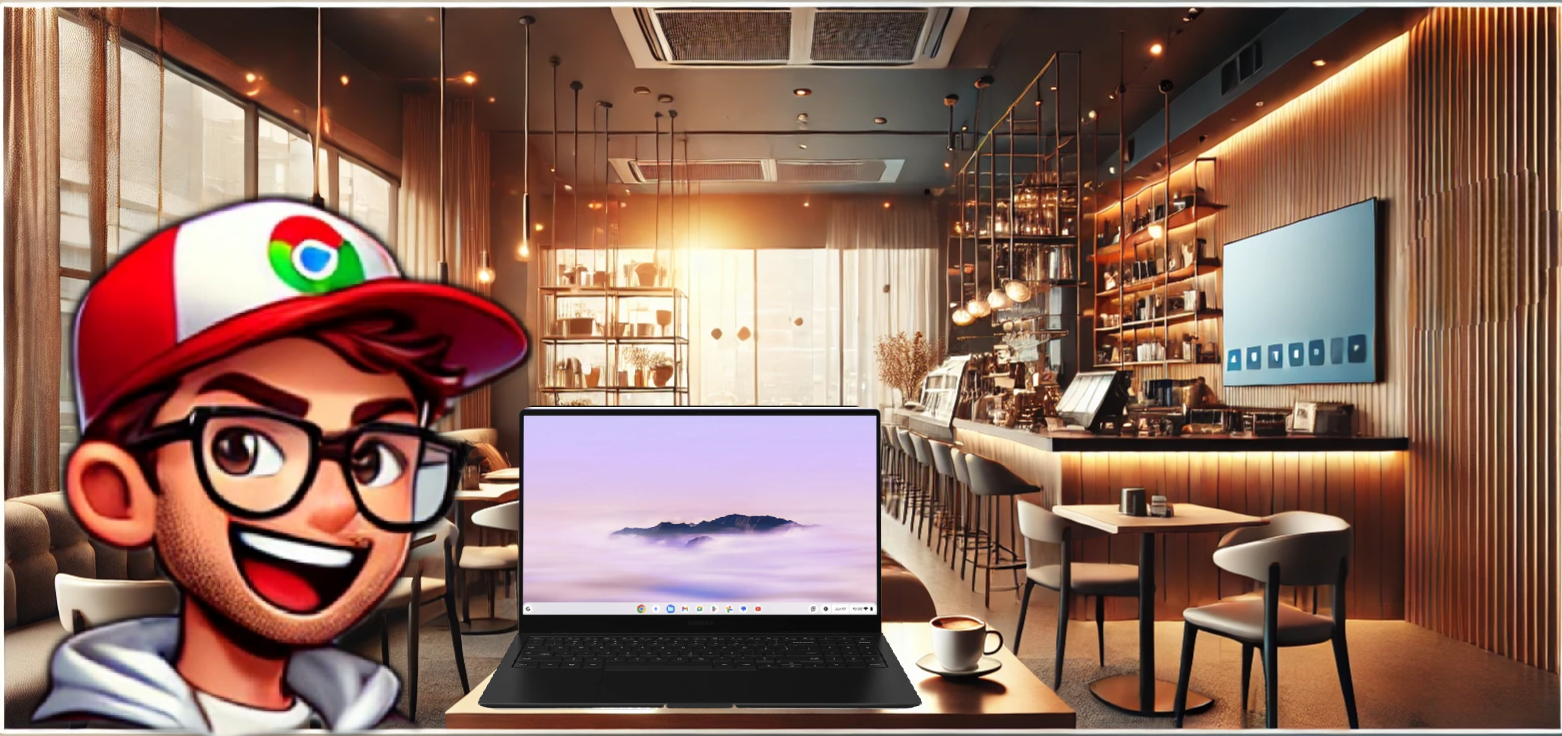
Samsung Chromebook Plus (2024) Review
The 2024 Samsung Chromebook Plus delivers solid performance and generous port selection in a $549 package that excels as a desktop replacement. However, limited battery life and missing premium features like touchscreen support make it best suited for users who prioritize connectivity over mobility.
In the evolving landscape of ChromeOS devices, Samsung's latest offering – the 2024 Chromebook Plus – arrives at a crucial time when the platform is maturing beyond its web-centric roots. Priced at $549, this device represents Samsung's vision for a productivity-focused Chromebook, though it takes some unexpected departures from previous Samsung flagship devices.
Design and Build Quality
The 2024 Samsung Chromebook Plus demonstrates Samsung's expertise in hardware manufacturing with a solid, well-constructed chassis that exhibits minimal flex. At 15.6 inches, it's decidedly positioned as a desk-focused productivity machine rather than an ultraportable companion, but this larger size allows for one of the device's standout features: an impressive port selection.
Where previous Samsung flagships often skimped on connectivity, the new Chromebook Plus offers a generous array of ports. With two USB-C ports, a full-size HDMI port, a MicroSD card slot, USB 3.0 Type-A port, and a 3.5mm headphone jack, this device eliminates the need for dongles in most scenarios. The inclusion of a full-size HDMI port is particularly noteworthy for classroom and office environments where direct connection to external displays is common.
The keyboard proves to be another highlight of the device. The backlit keys offer excellent travel and tactile feedback, with even backlighting that adjusts through multiple brightness levels. Samsung's decision to include a full-size number pad will likely divide opinions – while it's invaluable for users who frequently work with spreadsheets or numerical data, it does shift the main keyboard area off-center, requiring an adjustment period for some users.
Display and Multimedia
The 15.6-inch 1080p display presents a mixed bag of compromises. While the panel offers good brightness levels and color reproduction suitable for indoor use, its glossy finish proves problematic in well-lit environments. The significant glare can be particularly distracting in office settings or classrooms with overhead lighting. The absence of touch support is particularly noticeable given its presence in previous Samsung models and its utility in modern ChromeOS.
Where the device truly shines is in its video conferencing capabilities. The 1080p webcam delivers remarkably clear video quality that surpasses what you'll find in many premium laptops. With excellent low-light performance and good dynamic range, it's perfectly suited for remote learning and professional video calls. The built-in speakers, while not exceptional, provide adequate audio for video conferencing and casual media consumption.
Performance and Productivity
Powered by an Intel Core 3 100U processor paired with 8GB of RAM and 256GB of eMMC storage, the Chromebook Plus delivers impressive performance across various use cases. In daily use, the device handles twenty-plus active Chrome tabs without noticeable slowdown, maintains smooth Google Workspace performance, and manages Android apps with ease. Development tasks through Linux are equally smooth, with the device capably handling VS Code, terminal operations, and web development workflows.
Gaming performance through Steam on ChromeOS proves surprisingly capable. Older titles like Fable 1 run smoothly, and the device's thermal management remains effective during gaming sessions. The cooling system employs a fan that activates under heavy workloads, but its operation is quiet enough to go unnoticed in most environments.
Software and Features
ChromeOS runs smoothly on the hardware, offering quick boot times and seamless updates. Google's on-device AI features show promise but currently have limited applications. The on-device transcription works well for voice notes, and the "Help Me Write" feature assists with composition, but these features feel more like promising foundations than fully realized tools.
Battery Life and Power Management
Perhaps the device's most significant drawback is its battery life. In real-world productivity usage, including software development and web work, the device struggles to exceed 4-5 hours of use. This limitation could prove problematic for students and professionals who need all-day battery life. While the device supports USB-C charging from either port and is compatible with power banks, the need for supplementary power solutions adds to the total cost of ownership.
Value Proposition and Market Position
At $549, the 2024 Samsung Chromebook Plus sits in a competitive price bracket, making its value proposition complicated. While it offers solid performance, excellent build quality, and generous port selection, the omission of several premium features raises questions. The lack of a fingerprint reader, touchscreen capability, and Samsung S-Pen support – features previously standard on Samsung's "Plus" line – are notable absences at this price point.
The device is currently offered in only one configuration, with no upgrade options available. This one-size-fits-all approach might disappoint users who would prefer to customize their specifications, particularly given the device's positioning in the premium Chromebook segment.
Conclusion
The 2024 Samsung Chromebook Plus presents itself as a capable productivity machine with some clear strengths and notable compromises. Its excellent keyboard, superior webcam, and generous port selection make it a strong contender for desk-bound work and remote learning scenarios. The solid performance in both productivity and light gaming tasks further enhances its appeal as a versatile work machine.
However, the limited battery life and absence of premium features like touchscreen support and biometric security make the $549 price point harder to justify. For users who primarily work at a desk and prioritize port selection and performance over mobility and touch input, the Chromebook Plus represents a solid choice. Those needing all-day battery life or valuing the versatility of touch input should carefully consider alternatives before making the investment.
The device ultimately succeeds as a desktop-replacement Chromebook but may fall short for users seeking the full range of premium features typically associated with Samsung's Plus line. It's a capable machine that excels in specific use cases while leaving room for improvement in future iterations.
Keith Myers
Leave a comment
Your email address will not be published. Required fields are marked *
